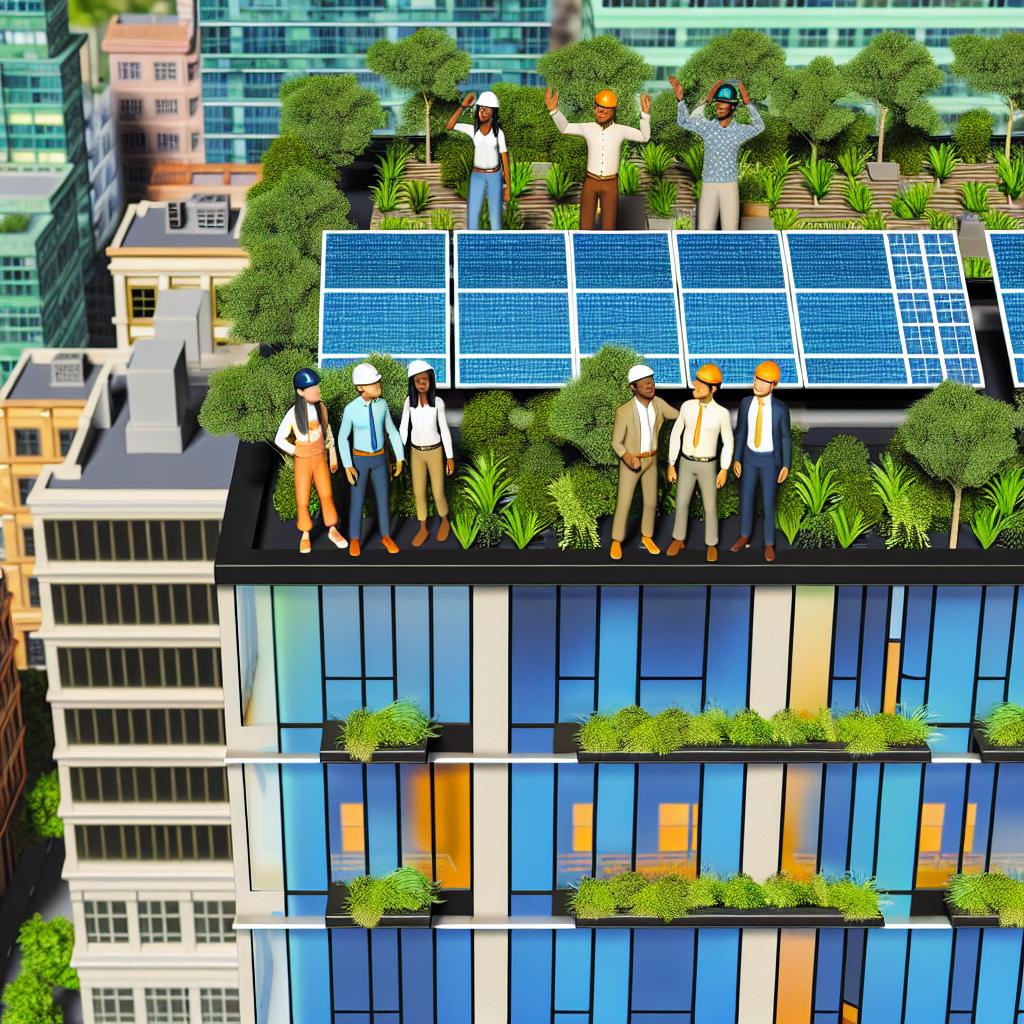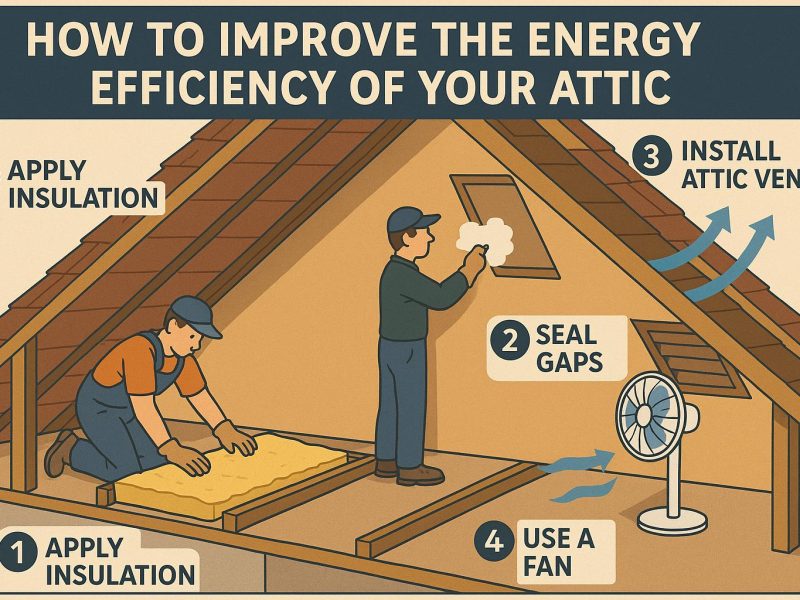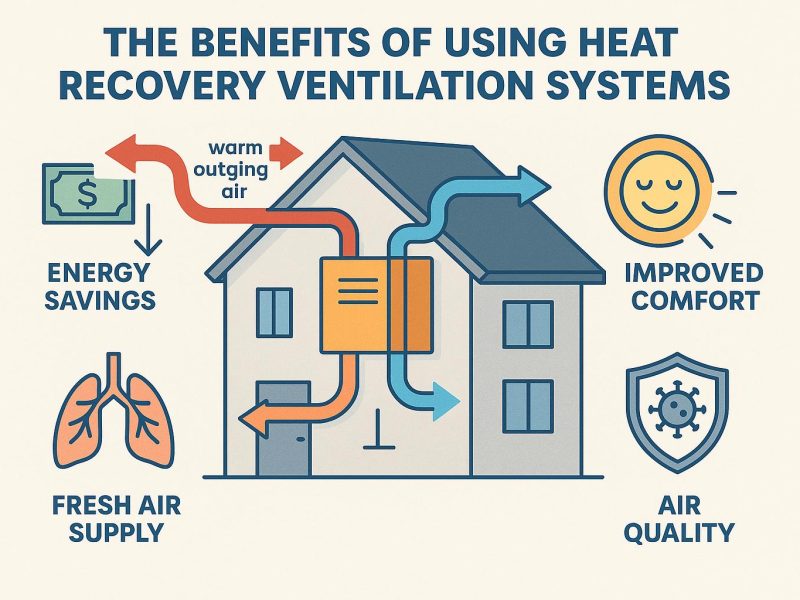Introduction to Green Roofs
Green roofs, also known as vegetative or eco-roofs, are a sustainable roofing solution that incorporates a layer of vegetation over a waterproofing system. These are typically installed on flat or slightly-sloped roofs and offer a range of benefits, especially in urban settings. As urban areas continue to grow and the need for sustainable building practices becomes imperative, green roofs stand out for their contributions to energy efficiency and environmental sustainability.
The Thermal Insulation Properties of Green Roofs
One of the most notable advantages of green roofs is their ability to enhance a building’s thermal insulation. This enhanced insulation is largely due to the combination of soil, plants, and the air spaces that exist within the growing medium. These elements collectively form an additional insulating layer that significantly reduces heat transfer through the roof. During the summer, this feature plays a crucial role in maintaining cooler indoor temperatures by reducing the amount of solar energy that the roof absorbs. Consequently, this lessens the dependence on air conditioning systems, which can lead to considerable energy savings. In contrast, during the colder months, green roofs help trap heat within the building, minimizing the need for artificial heating systems and thereby promoting more consistent indoor temperatures.
Mitigating the Urban Heat Island Effect
The Urban Heat Island (UHI) effect is a phenomenon where urban areas experience higher temperatures than their rural surroundings. This temperature increase is often due to the extensive use of conventional roofing materials and paved surfaces that absorb and retain heat. By replacing these traditional materials with vegetation, green roofs can effectively mitigate the UHI effect. The process of evapotranspiration, where water is transferred from the land to the atmosphere by evaporation from the soil and plant transpiration, plays a significant role in this cooling effect. As a result, green roofs contribute to reducing overall urban temperatures, which not only creates a more comfortable environment for city dwellers but also helps in lowering energy demands for air conditioning on a larger scale.
Reduction in Energy Consumption
The installation of green roofs is associated with a substantial reduction in energy consumption. By maintaining more uniform temperatures within buildings, green roofs can cut energy consumption by as much as 25%. This significant reduction has a direct impact on lowering the carbon footprints of urban buildings, thus playing an important role in climate change mitigation strategies. Moreover, buildings outfitted with green roofs often report decreased energy costs, offering both environmental and economic benefits that make a strong case for the adoption of green roof technology.
Enhancement of HVAC System Efficiency
In addition to cutting down on energy usage, green roofs also improve the performance and efficiency of Heating, Ventilation, and Air Conditioning (HVAC) systems. By stabilizing the indoor environment, HVAC systems do not have to work as hard, which can lead to an extension in their operating lifespan. This reduced strain not only lowers maintenance costs but also results in more efficient energy consumption. Consequently, buildings with green roofs may see an improvement in their energy performance certificate ratings, reflecting better building sustainability and efficiency.
Broader Environmental Impact
Green roofs offer environmental benefits that extend well beyond energy savings. They play a critical role in enhancing urban biodiversity by creating small habitats that support a variety of wildlife, from insects to birds. This introduction of greenery into urban settings offers sanctuary and promotes ecological interactions in an otherwise concrete-dominated environment. Furthermore, the plants on green roofs act as natural air filters, capturing airborne particulates and filtering pollutants, which leads to enhanced air quality across the city. The ability of green roofs to absorb and manage rainwater is another crucial environmental benefit. By retaining rainwater, green roofs mitigate the risk of flooding and alleviate the pressure on urban drainage systems.
Conclusion
In summary, green roofs present a wide array of advantages, particularly in enhancing energy efficiency within urban environments. They provide improved thermal insulation, help combat the urban heat island effect, reduce overall energy consumption, and enhance the efficiency of HVAC systems. By addressing these diverse facets, green roofs offer a comprehensive solution to the modern-day challenges of energy demands and environmental sustainability in urban settings. As cities aim to become more sustainable, green roofs emerge as an essential component of eco-friendly urban planning. For those seeking more in-depth information, various environmental organizations and research institutions are available online, providing extensive resources and expertise on the technical aspects of implementing and maintaining green roof systems.



